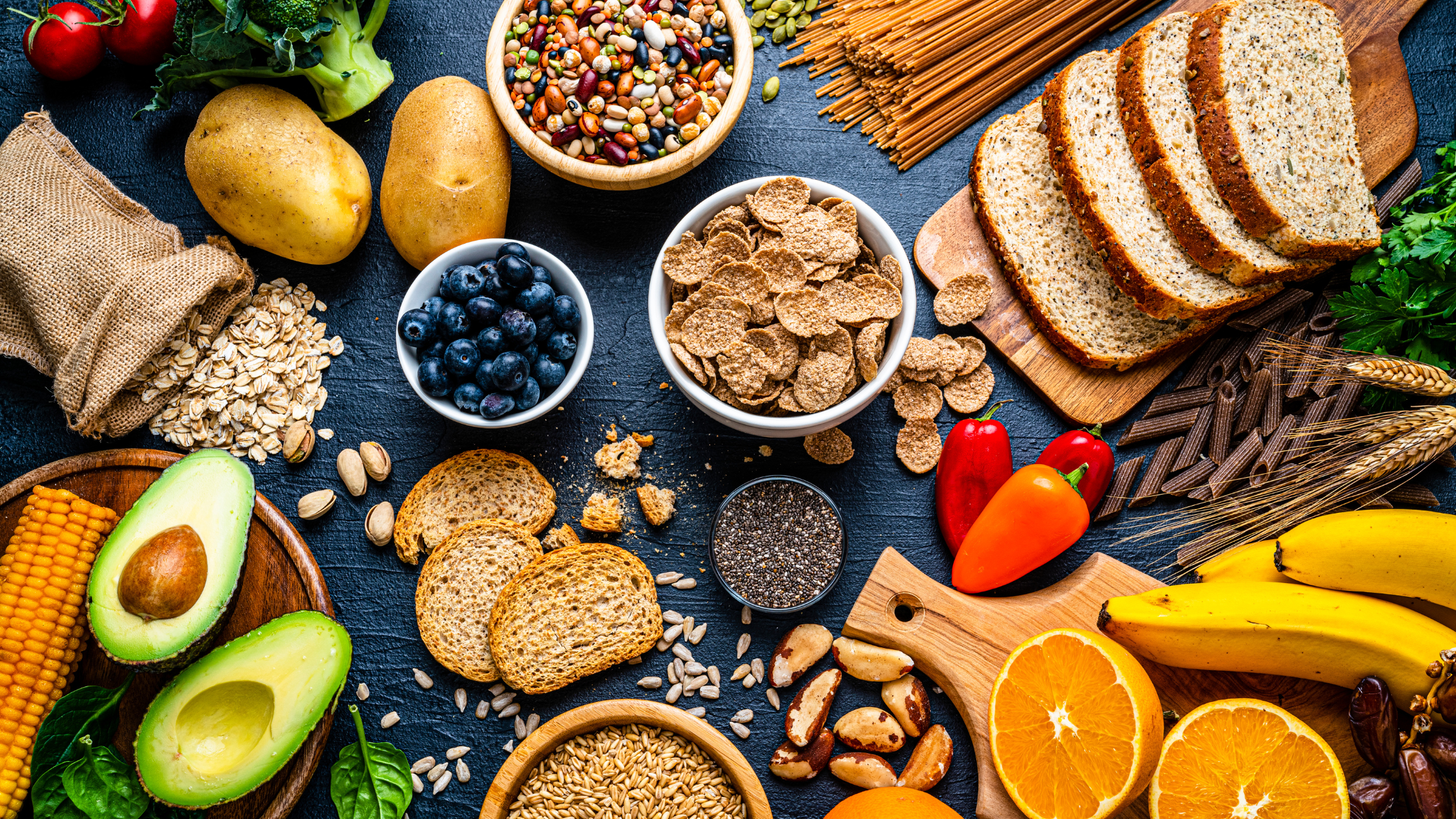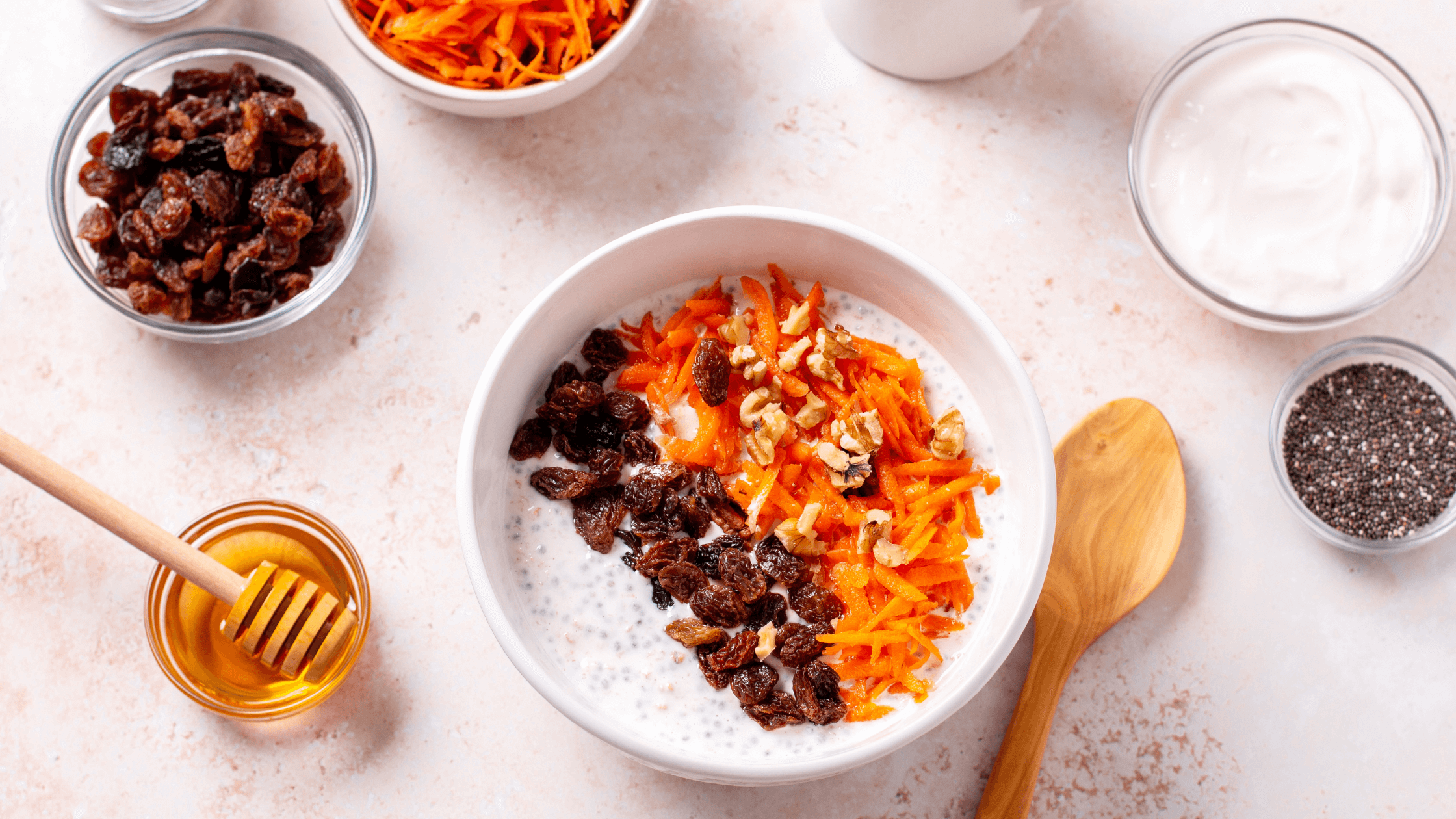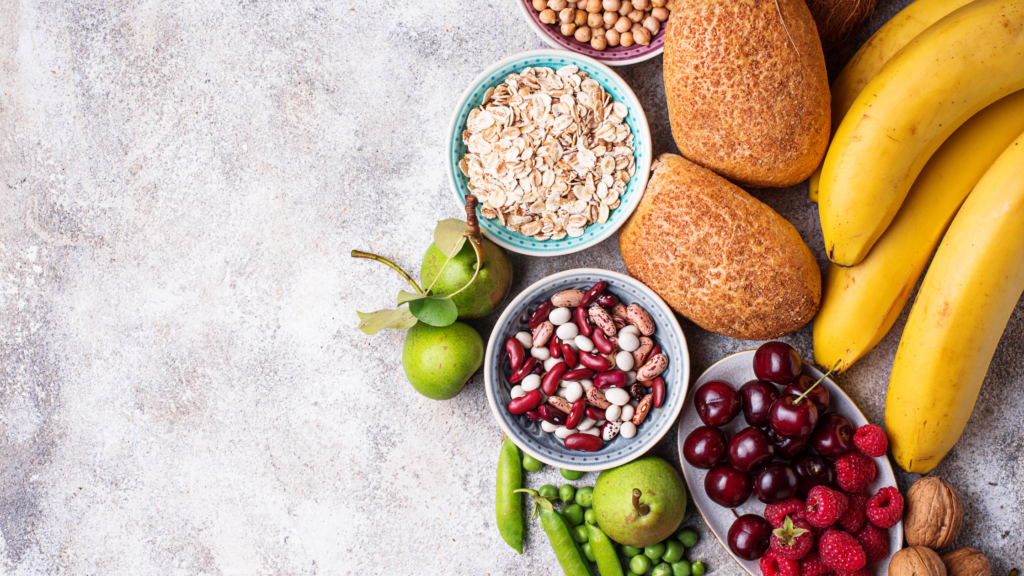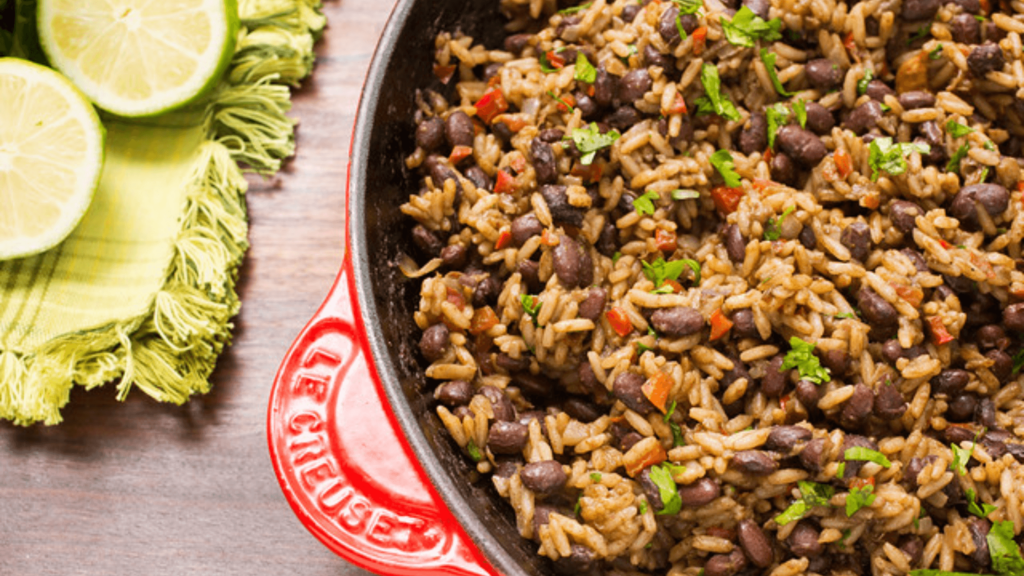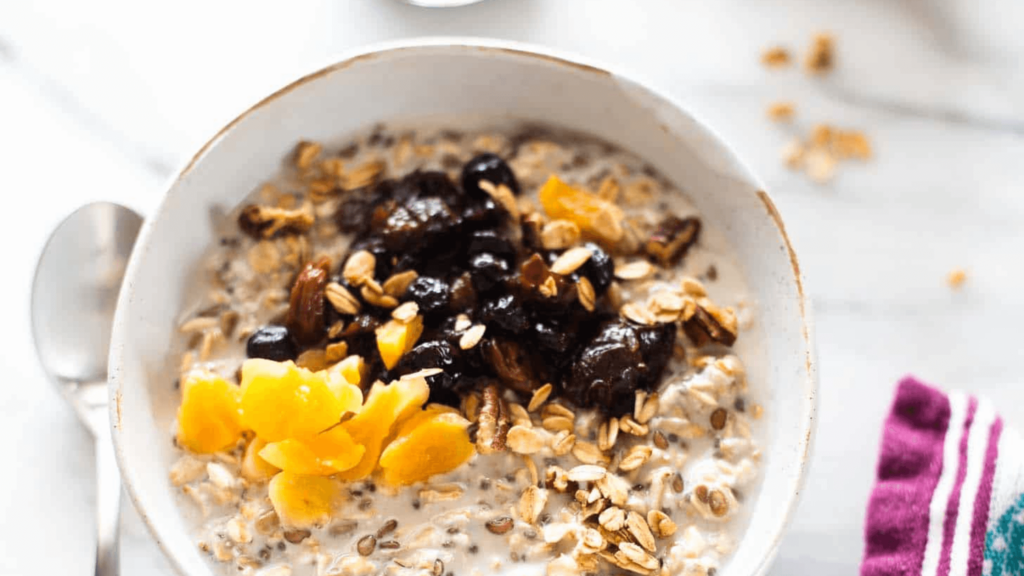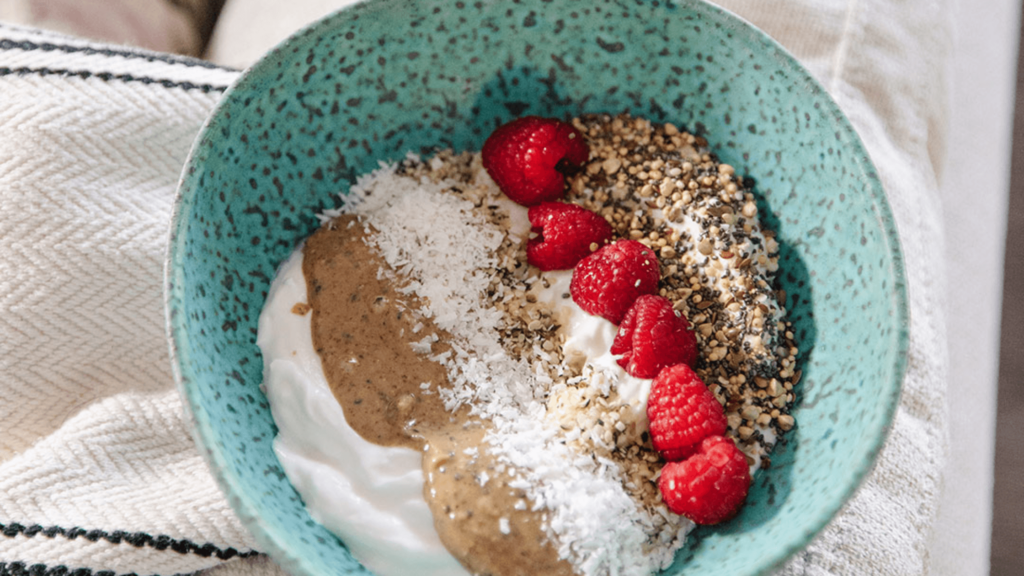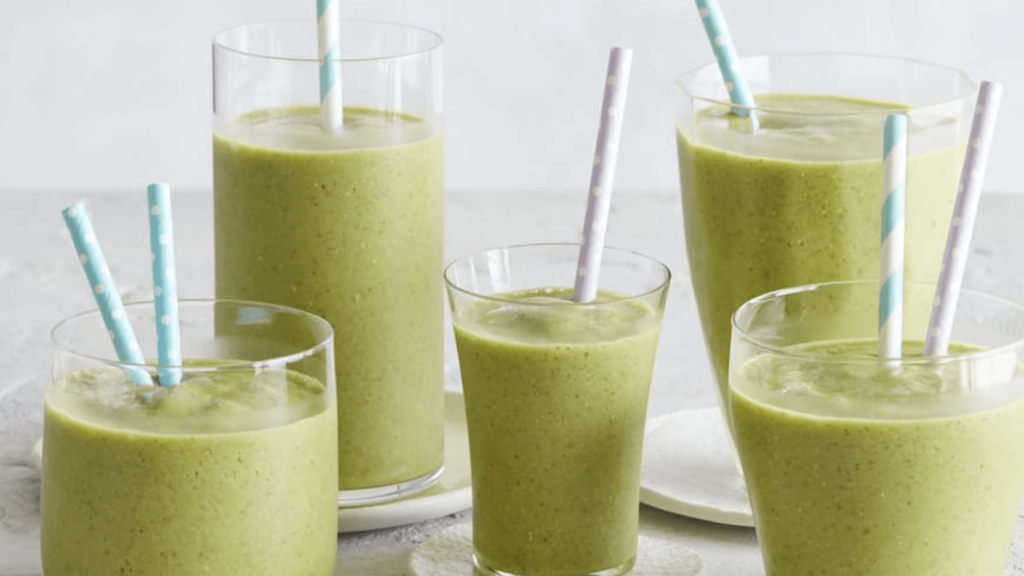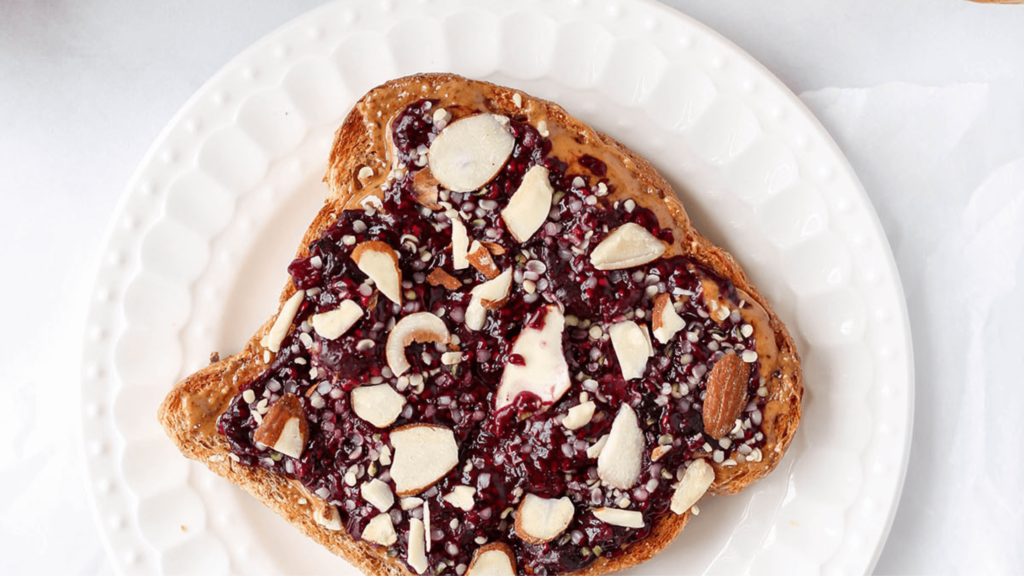Dietary fiber is best known for benefitting your bowels, but it does much more than that. Getting enough dietary fiber can help you lower cholesterol, control blood sugar, manage weight, and create a healthy gut biome. A fiber-rich diet full of whole grains, beans, fruit, and seeds may even help you live longer.
Quick look
- Men 31-50 need 31 grams of fiber daily, while women need 25.
- Fiber-rich food groups include beans, legumes, fruit, vegetables, and whole grains.
- There are two types of fiber: soluble, which dissolves and helps slow digestion, and insoluble, which adds bulk and softens stool.
- Fiber can help regulate blood sugar, manage weight, and support healthy bowels.
- High-fiber diets have been shown to reduce the risk of death from type 2 diabetes, heart disease, stroke, and colon cancer.
Fiber requirements
Women aged 31- 50 need 25 grams of fiber each day, while men aged 31-50 need 31 grams. Unfortunately, 95% of the population doesn’t meet these requirements, and when you’re stuck on the job site, it can be challenging to eat a balanced diet.
Need a quick cheat sheet to boost your fiber intake? We’ve rounded up the most fiber-rich food sources to help you change that. Getting enough fiber in your diet is a lot easier when you know what foods are full of it.
Top 25 high-fiber foods
Beans and legumes
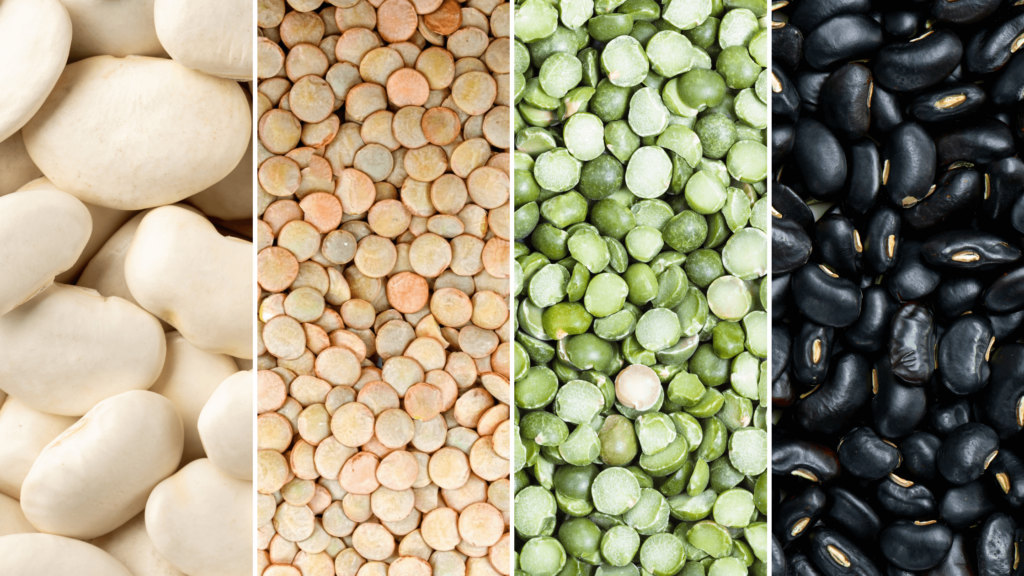
Beans and legumes are some of the best sources of dietary fiber, containing up to 18 grams in a single cup. Incorporating them into meals is also an easy way to beef up your fiber intake. Plus, canned beans and legumes are inexpensive, convenient, and ready to cook.
- Navy beans: 19 g/cup
- Split peas: 16 g/cup
- Lentils: 16 g/cup
- Pinto beans: 15 g/cup
- Black beans: 15 g/cup
Our fav bean/legume recipes:
Fruit
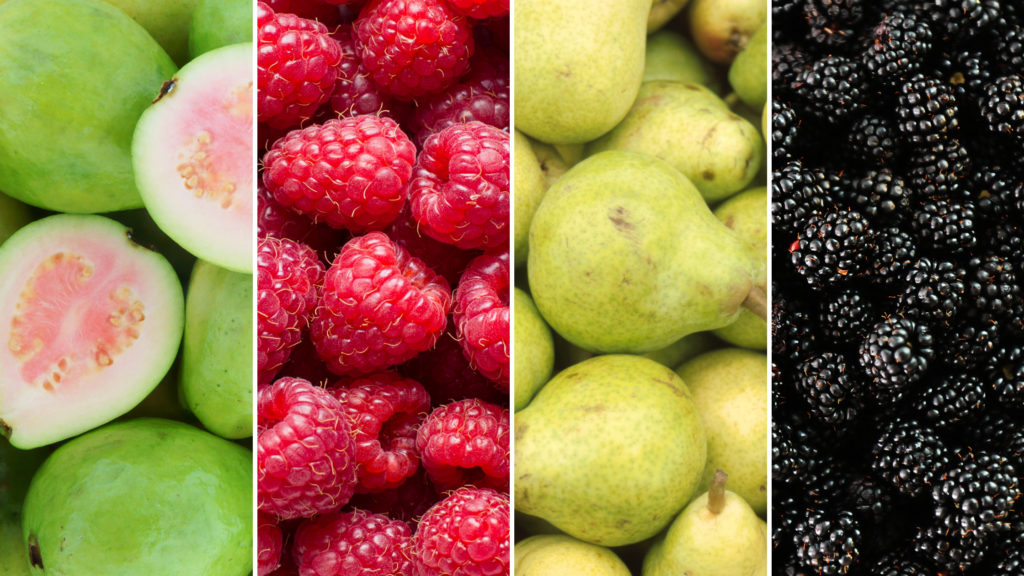
Juicy, delicious, and a fantastic source of fiber-fruit’s got it all! Feasting on fruit, whether it’s fresh, canned, or frozen, is a great way to up your fiber intake.
- Guava: 9 g per fruit
- Raspberries: 8 g/cup
- Blackberries: 8 g/cup
- Pear: 5.5 g per fruit
- Apple: 5.4 g per fruit
If you’re not a fan of eating fruit on its own, there are other ways to incorporate it into your diet. For example, smoothies are a quick, convenient, and portable way to load up on fruit!
Our fav fruit recipes:
Vegetables
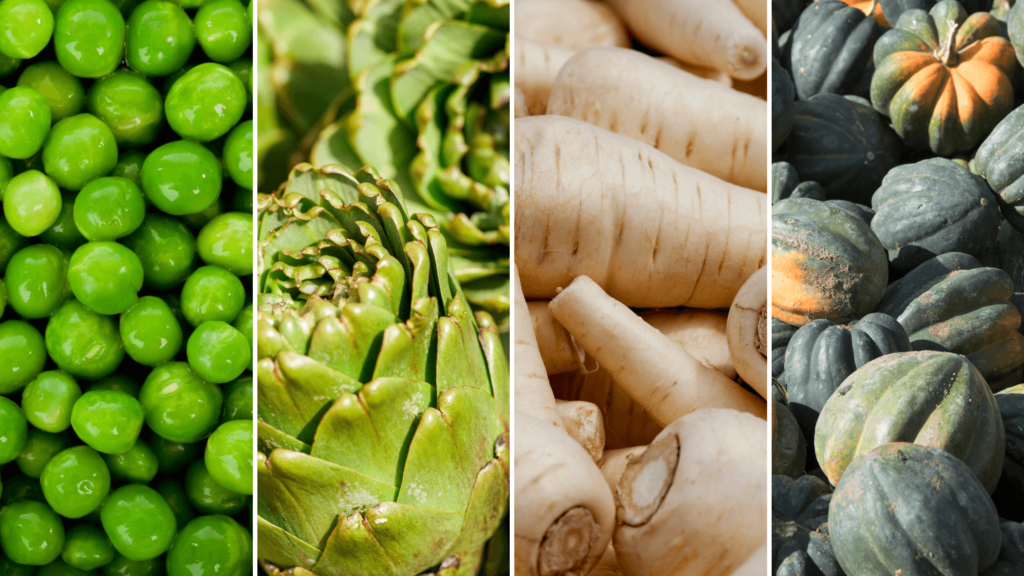
Whether they’re the main attraction, a delicious side dish, or a quick snack, eating these fiber-rich vegetables will help you meet your fiber goals and make your mom proud.
- Green peas: 9 g/cup
- Acorn squash: 9 g/cup
- Artichoke: 7 g each
- Parsnips: 7 g/cup
- Collard greens: 8 g/cup
Our fav fiber-rich vegetable recipes:
Nuts and seeds
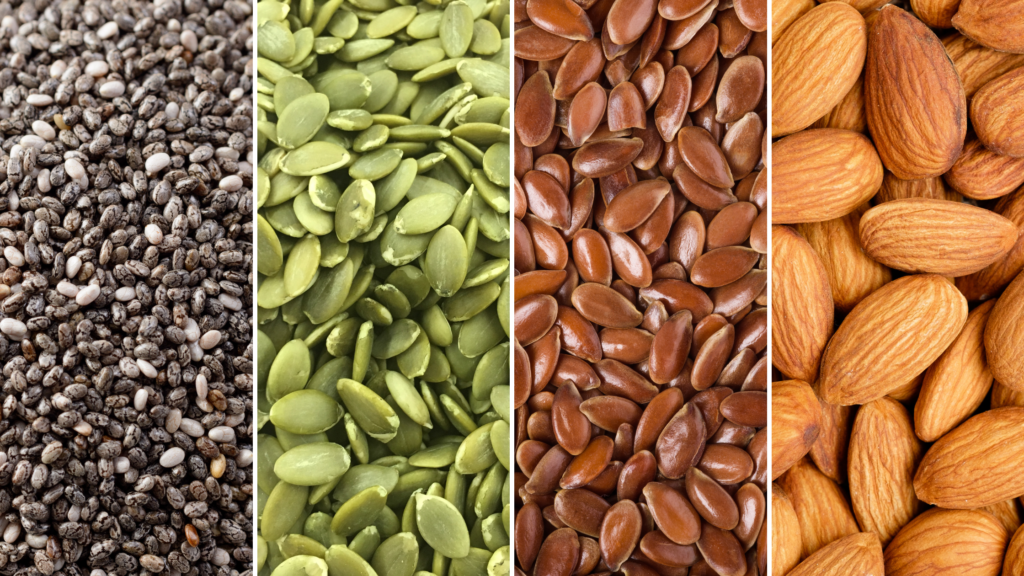
Nuts and seeds are packed with vitamins and nutrients, including fiber. Grab a handful of nuts or toss a tablespoon of seeds into a smoothie for a quick boost, and choose from the high-fiber options below to make the most of your snack. But be mindful of proportion size—one ounce is probably less than you think!
- Chia seeds: 5 g/tbsp
- Flax seeds: 3 g/tbsp
- Pumpkin seeds: 3 g/tbsp
- Almonds: 2 g/tbsp
- Sesame seeds: 2 g/tbsp
Our fav nut and seed recipes:
Whole grains
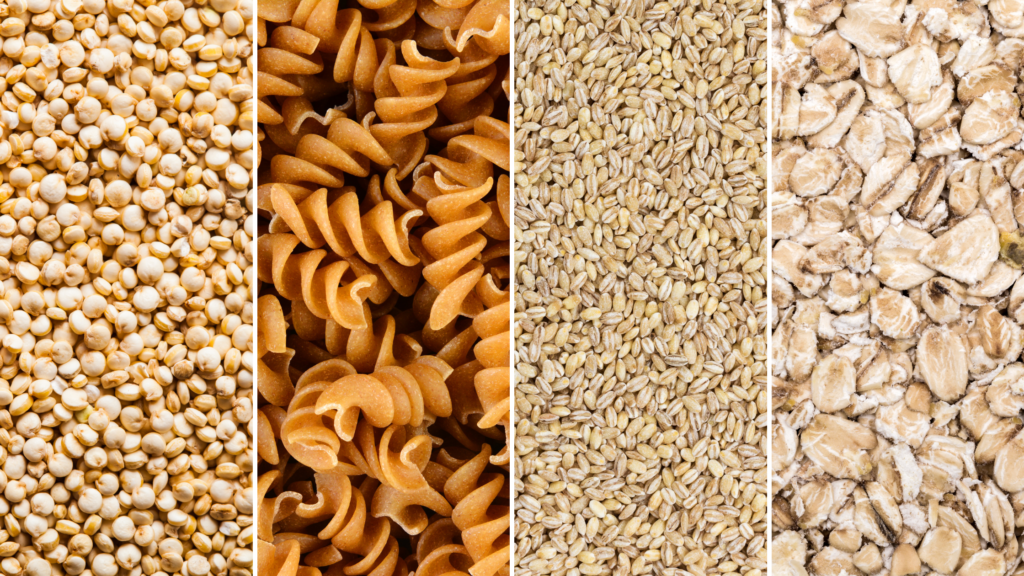
Carbs often get a bad rep, but whole grains are a healthy part of a balanced diet. These common whole grains are fiber-rich, incredibly versatile, and easy to incorporate into your diet.
- Pearl barley: 6 g/cup
- Quinoa: 5 g/cup
- Whole wheat pasta: 5 g/cup
- Oatmeal: 4 g/cup
- Whole wheat bread: 2 g/slice
Our fav grains recipes:
Fiber comes in different forms
There are two different forms of fiber, each playing an important role in overall health and well-being.
Soluble
As the name suggests, soluble fiber dissolves in water, forming a gel-like substance that helps slow digestion, allowing more time for vitamins and nutrients to be extracted and absorbed. Soluble fiber is found in many whole foods, including oats, peas, apples, nuts, seeds, and lentils. When it reaches the colon, it feeds good bacteria and helps to create a healthy gut microbiome.
Insoluble
Instead of dissolving, insoluble fiber absorbs water and creates bulk. It keeps you regular by softening stools and moving food through the digestive system faster. Sources of insoluble fiber include whole wheat foods, quinoa, beans, potatoes, and cauliflower.
Fiber isn’t just for your bowels
Only 5% of the population gets enough fiber, which might be because most people aren’t aware of the many benefits of a fiber-rich diet beyond keeping you regular. Even if you don’t need to improve your bathroom visits, fiber can contribute to a healthy body in many other important ways.
Blood sugar regulation
As soluble fiber dissolves, it combines with the food in your stomach, slowing digestion. When food takes longer to move through the digestive system, your body absorbs glucose into the bloodstream more gradually, preventing sharp spikes in blood sugar levels. This creates a steady energy supply throughout the day instead of roller-coaster highs and lows.
Weight management
Research shows that construction workers are more likely to be overweight compared to the general population—46.2% vs. 39.2%, respectively. While overall diet plays a vital role in weight management, increasing your fiber intake can help you reach and maintain a healthy weight. Fiber-rich foods create bulk, helping you feel fuller longer. They also feed healthy gut bacteria to keep your entire body functioning well.
Visceral fat is the most dangerous form of fat. It’s found deep inside your abdomen and surrounds vital organs. Increasing the amount of fiber in your diet can help reduce the amount of visceral fat in your body. One study showed that for every 10-gram increase in soluble fiber, participants showed a 3.7% decrease in visceral fat accumulation.
Bowel health
There is a reason this nutrient is synonymous with smooth moves. Dietary fiber can reduce your risk of colorectal cancer, create larger, softer stools (which reduces the risk of constipation), and lower your likelihood of developing hemorrhoids.
Longevity
Fiber is incredibly effective at lowering your risk of dying from colon cancer, type 2 diabetes, cardiac disease, and stroke. A meta-analysis of over 250 studies showed that people who ate a high-fiber diet reduced their risk of dying by 16-24% compared to those who ate a low-fiber diet. And for every 8 grams of additional fiber, that risk fell by a further 5-27%.
Help fiber help you
Getting enough fiber is a great way to lower blood sugar, manage weight, and even lengthen your lifespan. Just remember that what goes in must come out! It can be tempting to ignore nature’s call when you’re on the job site, especially if the only facilities available are porta-potties—but when you gotta go, you gotta go! Holding in your poop is rough on your system and can cause bloating, pain, constipation, and, in more serious cases, impaction.
Remember, everybody poops! And if you’re getting enough fiber, those bathroom visits will be a breeze.
For more health and nutrition articles delivered directly to your inbox, subscribe to our weekly newsletter.
